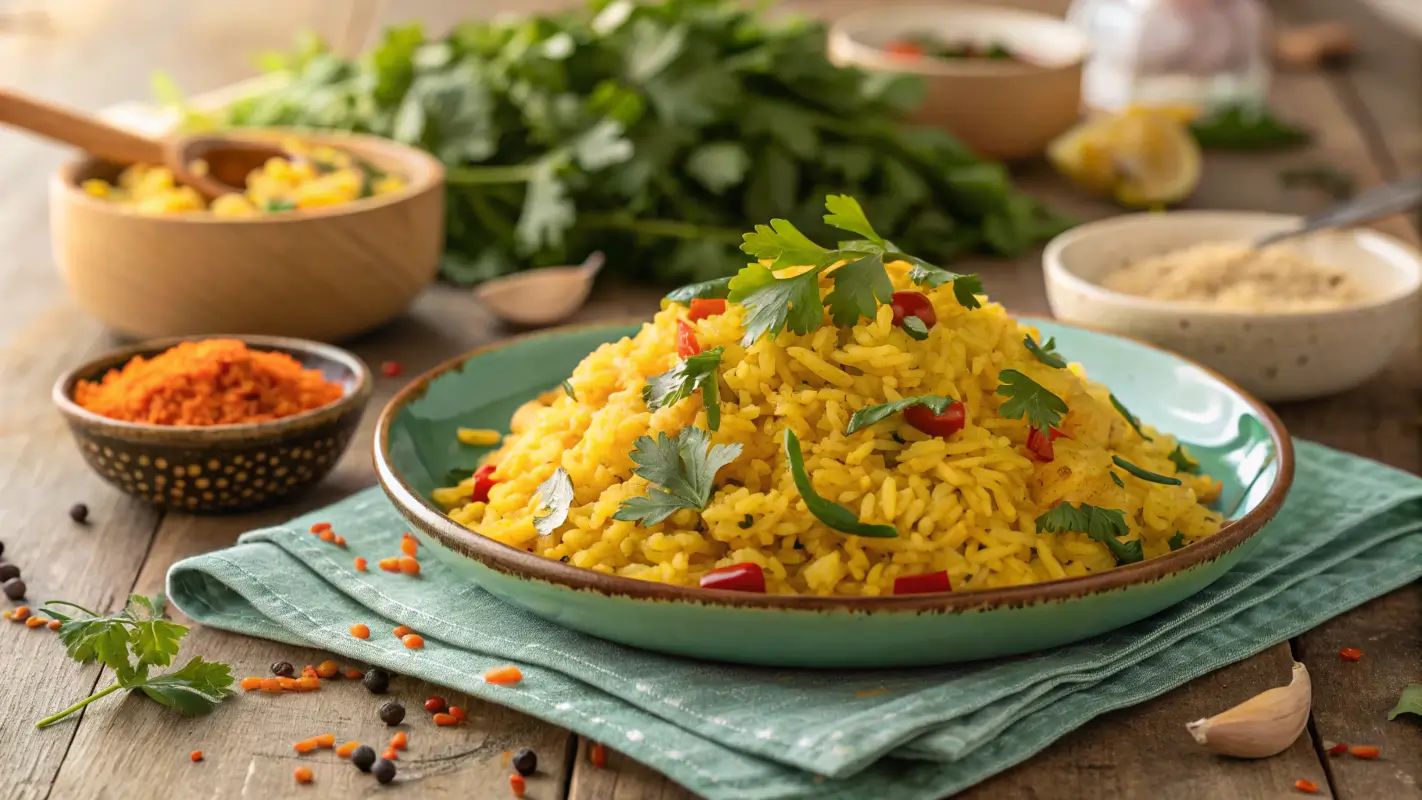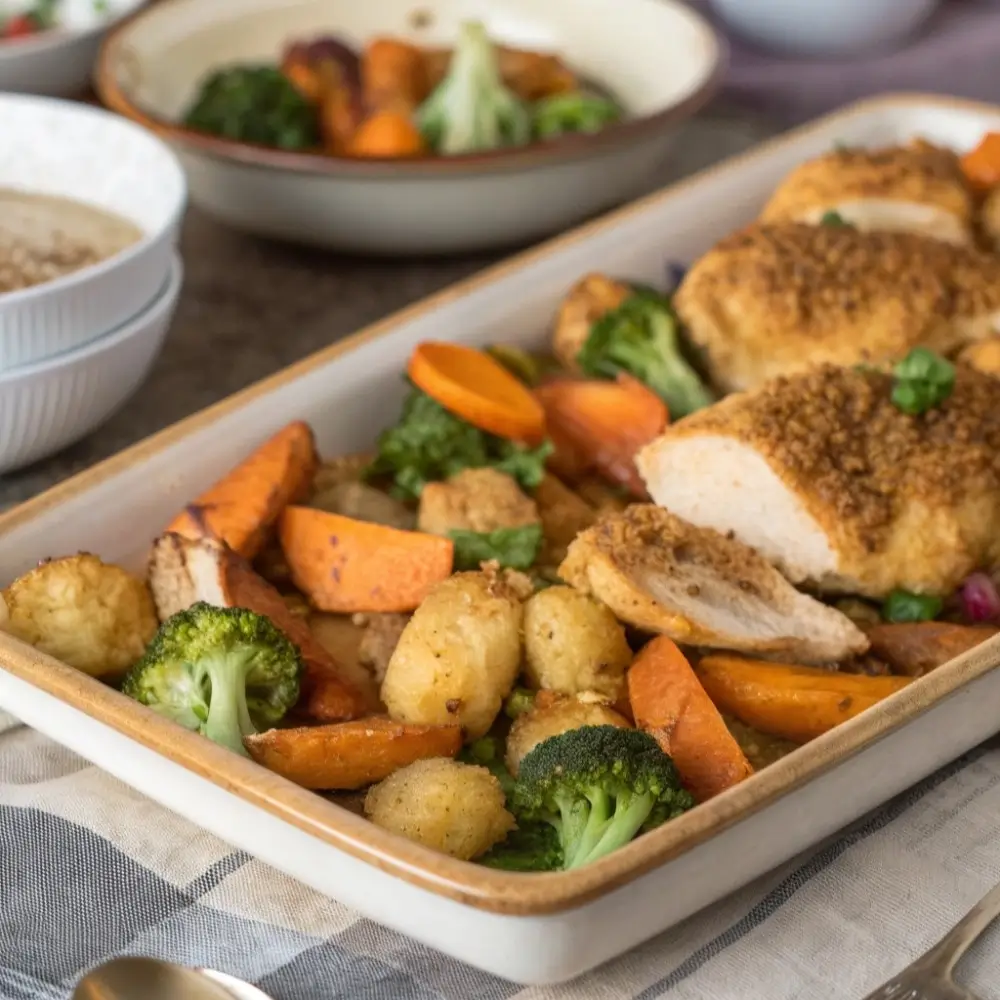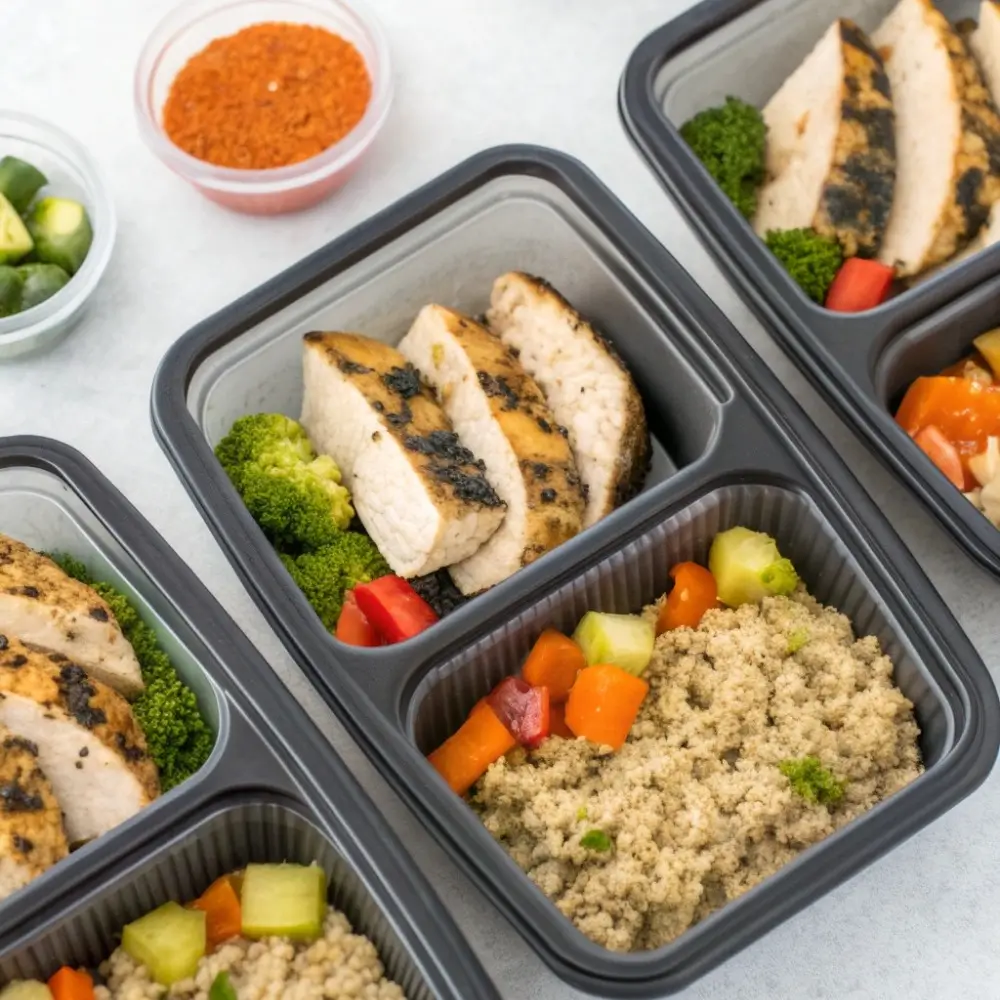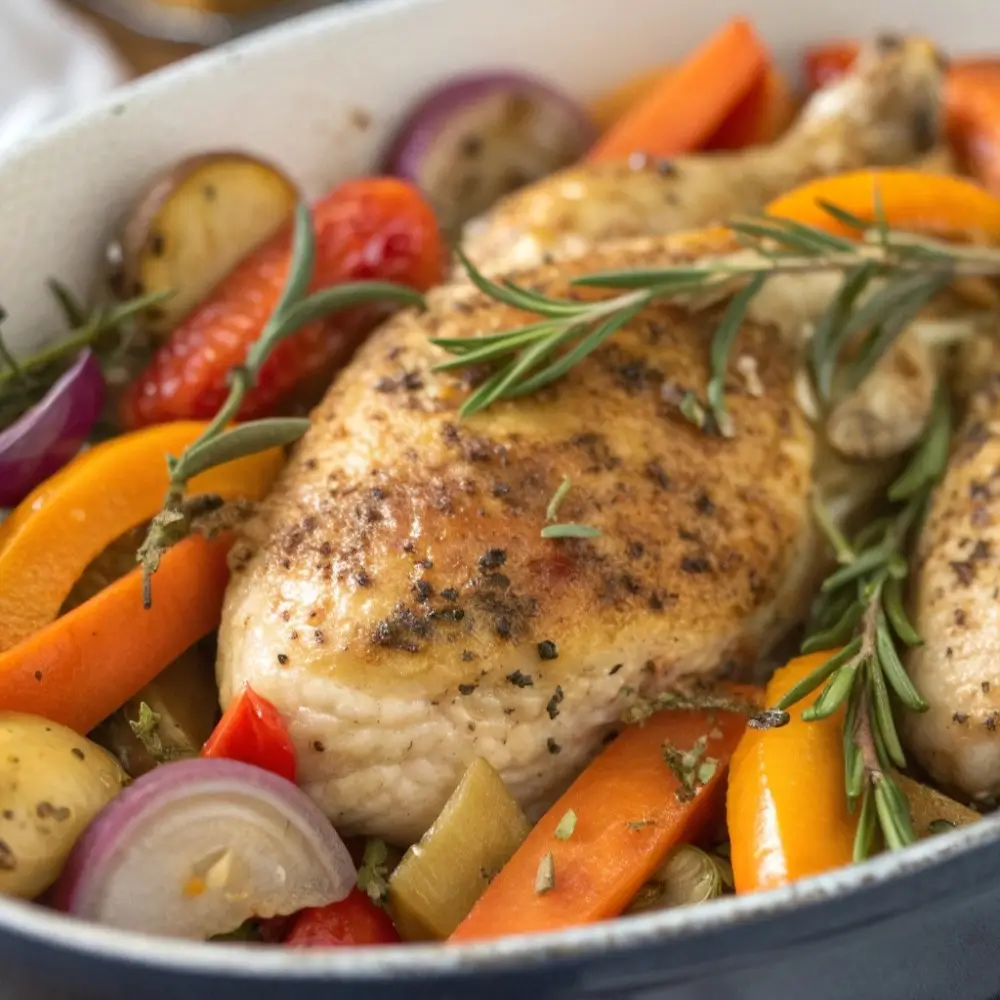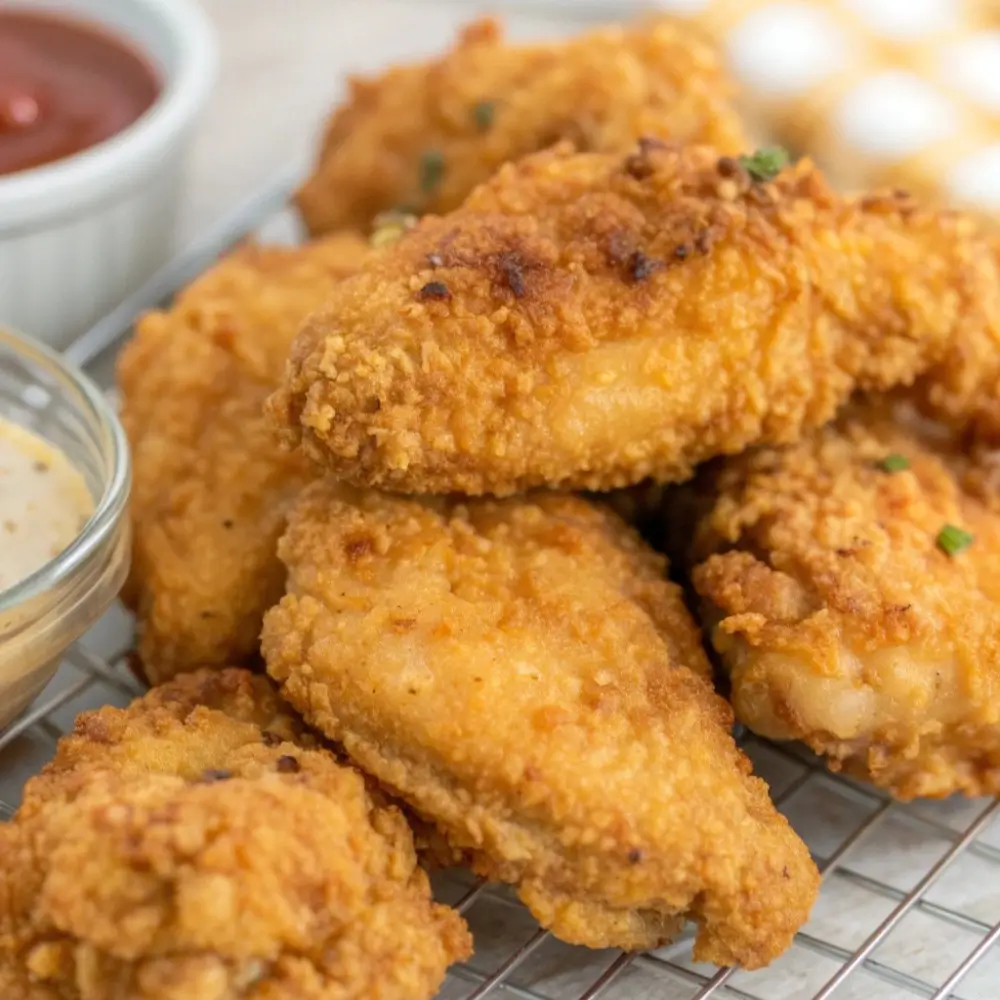Table of Contents
Introduction to Rice Hack Recipes
Rice is one of the most versatile and beloved ingredients worldwide. Whether it’s served as a side dish, main course, or even dessert, rice is often the foundation of a satisfying meal. But what if you could take your rice to the next level? Enter rice hack recipes—a collection of clever tricks and techniques that elevate the humble grain into something extraordinary.
Rice hacks aren’t just about cooking it perfectly; they encompass unique ways to prepare, flavor, and serve rice that bring out its best qualities. From enhancing its texture to infusing it with bold flavors, these hacks will help you create restaurant-worthy rice dishes with minimal effort. Whether you’re a seasoned cook or someone who simply loves rice, these tricks will transform your cooking routine.
In this guide, we’ll dive into some of the most popular rice hacks that can save time, boost flavor, and improve texture. We’ll also explore healthier ways to incorporate rice into your meals, making sure that you can enjoy its benefits without compromising on taste or nutrition. Ready to upgrade your rice game? Let’s get started!
Popular Rice Hack Recipes
Rice is incredibly adaptable, but sometimes it can feel like you’re running out of ideas to keep it exciting. Thankfully, rice hack recipes have emerged to solve that dilemma. From quick meals to more elaborate dishes, these recipes turn your regular rice into something special. Here are some popular rice hack recipes to inspire your next meal:
1. Garlic Butter Rice
A simple yet delicious hack, garlic butter rice infuses the grains with a rich, savory flavor. Start by sautéing minced garlic in butter, then stir in your cooked rice and a pinch of salt. Add fresh herbs like parsley or thyme for an extra layer of freshness. This rice hack takes just minutes and is a great side dish for almost any protein.
2. Coconut Rice
For a tropical twist, try cooking rice with coconut milk instead of water. The result is a creamy, slightly sweet rice that pairs perfectly with dishes like curry or grilled chicken. You can make it even more flavorful by adding a pinch of salt and a dash of vanilla extract.
3. Vegetable Fried Rice
Leftover rice is ideal for making vegetable fried rice, a popular dish that uses cooked rice from the previous day. Toss it in a hot pan with vegetables, eggs, soy sauce, and a splash of sesame oil. The beauty of this hack is that it’s endlessly customizable, so you can add whatever vegetables or proteins you have on hand.
4. Lemon and Herb Rice
If you’re looking for something light and refreshing, lemon and herb rice is the perfect hack. Simply cook your rice with a squeeze of fresh lemon juice and zest, then stir in your favorite herbs like basil, dill, or cilantro. This hack is ideal for adding a fresh, citrusy kick to your meal, especially when paired with seafood or grilled veggies.
5. Saffron Rice
For a truly luxurious rice experience, saffron rice is an elegant and flavorful option. Soak a pinch of saffron threads in warm water, then stir it into your rice while it cooks. This rice hack adds a beautiful golden color and a subtle floral flavor that elevates any meal.
6. Rice Pudding (Sweet Rice Hack)
Rice isn’t just for savory dishes—it can also shine in desserts. A classic rice hack is making rice pudding, where you cook your rice in milk, sugar, and cinnamon. The result is a creamy, comforting dessert that can be enjoyed warm or cold. It’s perfect for using up leftover rice or for a sweet treat at the end of a meal.
Health Benefits and Considerations
Rice is not only a staple food in many cultures but also a versatile ingredient that can be enjoyed in numerous dishes. While it provides essential carbohydrates for energy, it’s important to consider the health benefits as well as the potential downsides of consuming rice regularly. In this section, we’ll dive into the various health benefits of rice, its nutritional profile, and key considerations for making rice a part of your balanced diet.
1. Nutritional Profile of Rice
Rice is often praised for being a rich source of carbohydrates, but it also contains small amounts of protein, fiber, and essential vitamins and minerals. Here’s a breakdown of what you’ll get from a typical serving of rice (1 cup of cooked white rice):
- Calories: Around 200-220 calories
- Carbohydrates: 45g of carbs, providing energy
- Protein: 4-5g, depending on the variety of rice
- Fiber: White rice contains 0.5g of fiber, while brown rice offers about 3.5g of fiber
- Vitamins: A good source of B vitamins, including niacin and folate
- Minerals: Small amounts of magnesium, phosphorus, and iron
Different types of rice vary in nutritional content. For example, brown rice offers more fiber and essential nutrients than white rice because it retains its bran and germ. This makes it a healthier option for those seeking to boost their fiber intake or maintain better blood sugar control.
2. Health Benefits of Rice
Rice may be simple, but it offers a wide range of health benefits when consumed as part of a balanced diet. Let’s explore some of the key reasons why rice can be a healthy addition to your meals.
A Good Source of Energy
Rice is primarily composed of carbohydrates, which are your body’s main source of energy. The carbs in rice are digested slowly, providing a steady release of glucose into your bloodstream. This makes rice an excellent choice for sustained energy throughout the day, especially for people with active lifestyles.
Promotes Digestive Health (Especially Brown Rice)
Brown rice, in particular, is high in fiber due to the presence of the bran and germ. Fiber is essential for good digestive health, as it helps regulate bowel movements and prevent constipation. By including brown rice in your diet, you can promote a healthy digestive system and support gut health.
Supports Heart Health
The high fiber content in brown rice can also benefit heart health. Studies suggest that a diet rich in whole grains like brown rice may help reduce cholesterol levels and lower the risk of heart disease. Additionally, brown rice is a source of magnesium, a mineral that helps maintain normal heart rhythm and lowers the risk of cardiovascular conditions.
Helps Manage Blood Sugar Levels
For those with diabetes or individuals looking to control their blood sugar, brown rice is a healthier choice than white rice. Brown rice has a lower glycemic index, meaning it won’t cause a rapid spike in blood sugar levels. The fiber content slows down digestion, helping to maintain more stable blood sugar levels. This is especially important for individuals who need to manage their insulin sensitivity.
Gluten-Free and Allergy-Friendly
Rice is naturally gluten-free, making it an ideal choice for people with celiac disease or those who follow a gluten-free diet. It’s also a hypoallergenic food, meaning it’s unlikely to cause allergic reactions, making it suitable for most individuals, including those with food sensitivities.
Provides Antioxidants
Certain varieties of rice, especially colored rice like black rice or red rice, are rich in antioxidants. These antioxidants can help protect your cells from oxidative stress and reduce the risk of chronic diseases. For example, black rice contains anthocyanins, which are powerful antioxidants that have been linked to improved heart health and reduced inflammation.
3. Considerations for Rice Consumption
While rice has many health benefits, it’s important to be mindful of certain factors that may influence your health when consuming rice regularly. Below are some considerations to keep in mind.
Arsenic in Rice
One of the most talked-about concerns regarding rice is its potential arsenic content. Rice, particularly brown rice, can absorb more arsenic from the soil than other crops due to its growing conditions. Arsenic is a toxic substance that can accumulate in the body over time and lead to health issues like cancer, heart disease, and diabetes.
To minimize the risk of arsenic exposure, consider the following tips:
- Rinse the Rice: Wash your rice thoroughly before cooking. Rinsing can help remove some of the arsenic.
- Cook with More Water: Cooking rice with extra water and draining it afterward can reduce the arsenic content by up to 60%.
- Choose Rice Varieties: Some rice varieties, such as basmati rice and rice from regions with low arsenic levels, tend to contain lower amounts of arsenic. Opting for these types of rice can help reduce exposure.
White Rice vs. Brown Rice
While white rice is lighter and quicker to cook, it is stripped of its bran and germ, making it lower in fiber and essential nutrients compared to brown rice. White rice has a higher glycemic index, which can lead to a rapid spike in blood sugar levels.
For those seeking better nutritional benefits, brown rice is the healthier choice as it retains more of the grain’s nutrients. However, if you are trying to control your carbohydrate intake or have specific dietary needs, you may want to limit your consumption of rice or opt for alternatives like quinoa or cauliflower rice.
Portion Control
Rice can be high in calories if consumed in large quantities. While it’s a great source of energy, eating too much rice may contribute to weight gain, especially if you’re not balancing it with other nutrient-dense foods. To avoid overconsumption of rice, practice portion control by measuring out servings and balancing them with plenty of vegetables, lean protein, and healthy fats.
4. Rice and Diets
Rice can be a valuable part of many different dietary plans. Here are a few diets where rice can fit in:
-
Mediterranean Diet: Rice fits well into the Mediterranean diet, especially when paired with healthy fats like olive oil, lean protein, and fresh vegetables.
-
Keto Diet: Traditional rice is not typically recommended on a keto diet due to its high carb content. However, alternatives like cauliflower rice can be used to mimic the texture and experience of rice while keeping the carb count low.
-
Plant-Based Diets: Rice is an excellent addition to plant-based diets as it provides a source of carbohydrates and complements plant-based proteins like beans, tofu, and lentils.
Practical Tips and Techniques
When it comes to cooking rice, the technique you use can make all the difference. From getting your rice perfectly fluffy to incorporating healthy and delicious ingredients, the right approach ensures your rice dish turns out just the way you want. In this section, we’ll dive into practical tips and techniques that will elevate your rice game and help you master the art of cooking rice like a pro.
1. The Secret to Perfectly Fluffy Rice
Achieving perfectly fluffy rice can sometimes be tricky, but with a few simple tricks, you can get it right every time. Here are some key steps to make sure your rice is light, fluffy, and not overly sticky:
-
Rinse the Rice: Always rinse your rice before cooking to remove excess starch. This prevents the rice from becoming too sticky and clumpy. Rinse it under cold water until the water runs clear.
-
Water-to-Rice Ratio: The general rule for most types of rice is a 2:1 water-to-rice ratio. However, this can vary depending on the type of rice. For example, basmati rice requires less water (1.5 cups of water to 1 cup of rice), while short-grain rice might need a bit more water to cook evenly.
-
Avoid Stirring: Once your rice is cooking, avoid stirring it too much. Stirring can release starch, making the rice sticky. Instead, gently fluff it with a fork once it’s done.
-
Let It Sit: After cooking, let your rice sit covered for 5-10 minutes to allow it to firm up and steam. This step helps in achieving that light, fluffy texture.
2. How to Cook Rice in a Rice Cooker
A rice cooker is an invaluable tool in any kitchen, and using one takes the guesswork out of cooking rice. Here’s how to make the most out of your rice cooker:
-
Measure Your Ingredients: Most rice cookers come with a measuring cup to ensure the proper water-to-rice ratio. Follow the instructions on your rice cooker, but a good rule of thumb is 1.5 cups of water for every cup of white rice, or 2 cups of water for brown rice.
-
Add Flavors: Rice cookers are also great for infusing flavors into your rice. Add a splash of olive oil, a pinch of salt, or even a cinnamon stick to the water for extra flavor. You can also try adding a bit of coconut milk instead of water for a creamy, fragrant twist.
-
Wait for the “Keep Warm” Setting: Most rice cookers automatically switch to the “keep warm” setting once the rice is done cooking. Let the rice sit in the cooker for an additional 10-15 minutes after it switches to this setting for optimal results.
3. How to Store Rice
Storing rice properly is key to keeping it fresh and preventing it from spoiling quickly. Here’s how to store your rice:
-
Cooked Rice: After cooking rice, let it cool down to room temperature before refrigerating it. Store the rice in an airtight container and consume within 4-6 days. Be sure to reheat it thoroughly when you are ready to eat it.
-
Uncooked Rice: Uncooked rice can last for months if stored in a cool, dry place. To keep it fresh, store it in an airtight container to protect it from moisture and pests. Brown rice has a shorter shelf life due to its natural oils but will last 6 months to a year if stored properly.
-
Freezing Rice: If you want to store cooked rice for a longer period, freezing is an option. Place the rice in a freezer-safe bag or container, and it will last up to 3 months. Reheat frozen rice by microwaving it with a splash of water to regain its fluffiness.
4. Using Rice in Creative Dishes
Rice is incredibly versatile, and you can use it as more than just a side dish. Here are a few creative ideas to make rice the star of your meal:
-
Rice Bowls: Rice bowls are all the rage these days. Create your own by layering rice with protein (like chicken, tofu, or shrimp), fresh veggies, and a flavorful sauce. Add toppings like avocado, nuts, or herbs for extra flavor and texture.
-
Rice Salads: Leftover rice makes a great base for a quick and easy salad. Simply toss the rice with fresh vegetables, herbs, a light dressing, and any other add-ins you like. Try adding chickpeas, feta, or olives for extra flavor.
-
Stuffed Vegetables: Use rice as a stuffing for bell peppers, zucchini, or tomatoes. Mix it with ground meat, beans, or vegetables, and bake for a healthy and satisfying meal.
-
Rice Desserts: Rice can even make an appearance in sweet dishes. Rice pudding is a classic, but you can also try making rice-based smoothies or rice cakes for a healthier snack.
5. Rice Substitutes: Healthier Options
For those who are looking to cut carbs or try something new, rice substitutes can be a great option. Here are a few alternatives to traditional rice that still offer the same great texture and versatility:
-
Cauliflower Rice: A popular low-carb option, cauliflower rice is made by pulsing cauliflower florets in a food processor until they resemble rice grains. It’s light and can be cooked just like regular rice, providing a healthy, veggie-packed alternative.
-
Quinoa: Quinoa is a protein-packed grain that can be used as a substitute for rice. It has a nutty flavor and is rich in essential amino acids, making it a great choice for vegetarians and vegans.
-
Brown Rice: While not technically a substitute, brown rice is a healthier alternative to white rice. It contains more fiber and nutrients and has a chewier texture, making it a great option for those looking to add more whole grains to their diet.
-
Shirataki Rice: Also known as konjac rice, this is made from the konjac root and is extremely low in calories and carbs. It’s a great option for those on low-carb or keto diets.
Looking for health benefits of rice? Check out this informative article about the health benefits of rice.
FAQs on Rice Hack Recipes
As rice is such a versatile ingredient, it’s no surprise that people have a lot of questions about how to make the most out of it. From storage tips to cooking methods, here are the most frequently asked questions (FAQs) when it comes to rice hack recipes. These answers will clear up any doubts and help you maximize your rice experience.
1. How do I make rice less sticky?
Sticky rice can be a common issue, but there are a few tricks you can try to prevent this from happening:
-
Rinse the Rice: One of the most important steps is rinsing the rice until the water runs clear. This removes excess starch that can make rice sticky.
-
Use the Right Water Ratio: Using too much water can lead to sticky rice. For most types of rice, the typical ratio is 2 cups of water for every cup of rice. However, some varieties like basmati rice require less water (about 1.5 cups).
-
Avoid Stirring: Stirring rice while it’s cooking can release starch, which makes the rice stick together. Once it’s boiling, reduce the heat and let it simmer undisturbed.
-
Fluff the Rice: After cooking, fluff the rice with a fork to separate the grains. Letting it sit for a few minutes before serving also helps it firm up and prevents it from clumping.
2. Can I use rice leftovers for other recipes?
Absolutely! Leftover rice can be a great base for many creative dishes. Here are a few ideas to use leftover rice:
-
Fried Rice: The classic way to repurpose leftover rice. Sauté the rice with veggies, eggs, and your choice of protein for a quick and tasty meal.
-
Rice Pudding: Turn your leftover rice into a sweet dessert by cooking it with milk, sugar, and a dash of vanilla or cinnamon.
-
Rice Salads: Cold rice can be tossed with fresh veggies, herbs, and dressing to make a refreshing rice salad.
-
Rice Soup: Add leftover rice to soups or stews for extra texture and heartiness.
3. How can I make rice more flavorful without using too much oil or butter?
There are plenty of ways to enhance the flavor of rice without overloading it with oil or butter. Here are some flavor-packed alternatives:
-
Broth: Cook rice in vegetable, chicken, or beef broth instead of water for a more flavorful base.
-
Herbs and Spices: Infuse your rice with herbs like thyme, rosemary, or bay leaves. Spices like cumin, turmeric, or cinnamon add richness and warmth.
-
Citrus: A squeeze of lemon or lime juice adds a burst of freshness to rice, especially in dishes like garlic lemon rice.
-
Garlic and Onion: Sauté minced garlic or onion in a little olive oil before adding your rice and water. This creates a fragrant base for your rice to absorb.
-
Coconut Milk: For a creamy, tropical twist, try cooking rice with coconut milk instead of water. This adds a subtle sweetness and richness.
4. How do I cook rice without a rice cooker?
If you don’t have a rice cooker, don’t worry! Cooking rice on the stovetop is just as simple. Here’s how to do it:
- Rinse the Rice: Always rinse your rice first to remove excess starch.
- Add Water: Use the 2:1 ratio of water to rice (or adjust based on the type of rice you’re using). Bring the water to a boil.
- Simmer: Once the water is boiling, reduce the heat to low, cover the pot, and let the rice simmer for 15-20 minutes (depending on the type of rice).
- Let It Sit: After cooking, let the rice sit covered for about 5-10 minutes to firm up before serving.
5. Can I cook rice in a microwave?
Yes! Microwaving rice is a quick and convenient way to cook it, especially if you’re short on time. Here’s how:
-
Combine Rice and Water: In a microwave-safe bowl, combine 1 cup of rice with 2 cups of water (adjust based on your microwave and the type of rice).
-
Cover: Cover the bowl with a microwave-safe lid or plate.
-
Microwave: Microwave on high for 10 minutes, then reduce the power to medium and cook for an additional 10 minutes.
-
Fluff: Let the rice sit covered for 5 minutes before fluffing it with a fork. If needed, adjust the cooking time depending on your microwave’s wattage.
6. What is the best type of rice for making fried rice?
For fried rice, the best type of rice is one that’s firm and not overly sticky. Day-old rice works best, as it has dried out a little, making it easier to fry. Here are the top types of rice to use:
-
Jasmine Rice: Its long, fluffy grains and fragrant aroma make it a perfect choice for fried rice.
-
Basmati Rice: This rice is light, fluffy, and non-sticky, making it great for fried rice.
-
Brown Rice: If you prefer a healthier option, brown rice can work well for fried rice, offering extra fiber and nutrients.
The key to perfect fried rice is using rice that’s not too wet or sticky, so if you’re making fried rice, leftover rice is ideal!
7. Can I substitute cauliflower rice for regular rice in recipes?
Yes! Cauliflower rice is a great low-carb and gluten-free alternative to traditional rice. It’s made by grating or processing cauliflower into small, rice-like pieces, and it can be cooked in the same way as regular rice.
- For Stir-Fries: Cauliflower rice works great in stir-fries, especially if you’re looking for a low-carb option.
- As a Side: Use cauliflower rice as a substitute for regular rice in any dish, like curry or rice bowls.
Just remember, cauliflower rice won’t be as filling as regular rice, so you may want to pair it with a hearty protein or extra vegetables to make a complete meal.
8. Can I make rice ahead of time for meal prep?
Absolutely! Rice is a great ingredient for meal prepping. You can cook a large batch of rice and store it for use throughout the week. Here’s how:
-
Store: Let the rice cool completely before storing it in an airtight container in the refrigerator. It can last for 4-6 days.
-
Freeze: If you want to make rice ahead of time for longer storage, freeze it in individual portions. When reheating, simply microwave or steam it with a little water to bring it back to life.
Meal prepping with rice can save you time throughout the week and ensure you always have a quick base for your meals.
Print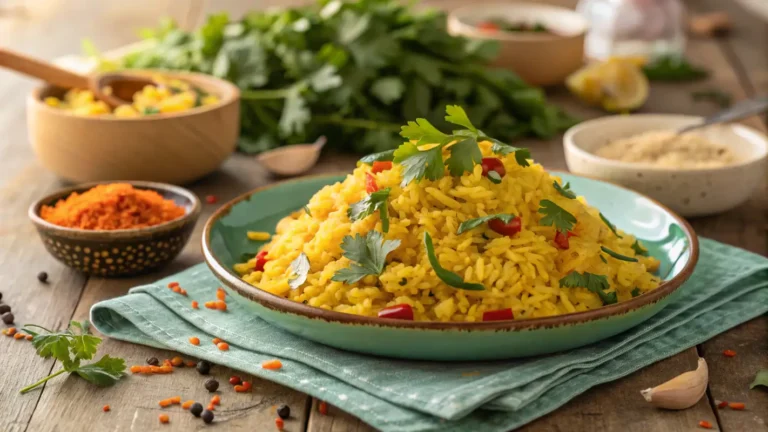
Rice Hack Recipe
A rich and savory side dish, Garlic Butter Rice combines the comforting flavor of butter with the aromatic punch of garlic. Quick, simple, and versatile, it’s a perfect accompaniment to chicken, fish, or vegetables.
- Total Time: 25 minutes
- Yield: 4 servings 1x
Ingredients
- 1 cup long-grain white rice (e.g., jasmine or basmati)
- 2 cups water or low-sodium chicken broth
- 2 tablespoons unsalted butter
- 3 cloves garlic, minced
- ¼ teaspoon salt (adjust to taste)
- 1 tablespoon chopped fresh parsley (optional, for garnish)
- ½ teaspoon black pepper (optional)
Instructions
- Rinse the Rice: Rinse the rice under cold water until the water runs clear to remove excess starch. Drain well.
- Sauté Garlic: In a medium saucepan, melt 1 tablespoon of butter over medium heat. Add the minced garlic and sauté for 1–2 minutes, until fragrant but not browned.
- Add Rice: Add the rinsed rice to the pot and stir to coat it with the butter and garlic.
- Add Liquid & Cook: Pour in the water or broth and add salt. Bring to a boil over medium-high heat.
- Simmer: Once boiling, reduce heat to low, cover, and simmer for 15–18 minutes, or until the rice is cooked and liquid is absorbed.
- Rest & Fluff: Turn off the heat and let the rice sit covered for 5 minutes. Then fluff with a fork.
- Add Butter & Garnish: Stir in the remaining 1 tablespoon of butter and sprinkle with chopped parsley and black pepper (if using). Serve warm.
Notes
- For extra depth of flavor, use chicken or vegetable broth instead of water.
- Add a pinch of red pepper flakes for a little heat.
- Make it a full meal by adding sautéed mushrooms, spinach, or shredded chicken.
- Prep Time: 5 minutes
- Cook Time: 20 minutes
- Category: Side Dish
- Method: Stovetop
- Cuisine: American
- Diet: Vegetarian
Nutrition
- Serving Size: ½ cup (approx.)
- Calories: 215
- Sugar: 0.5g
- Sodium: 210mg
- Fat: 7g
- Saturated Fat: 4g
- Unsaturated Fat: 2.5g
- Trans Fat: 0 g
- Carbohydrates: 34g
- Fiber: 0.7g
- Protein: 3.2g
- Cholesterol: 15mg
Keywords: garlic butter rice, easy rice recipe, flavorful rice, side dish, quick rice
